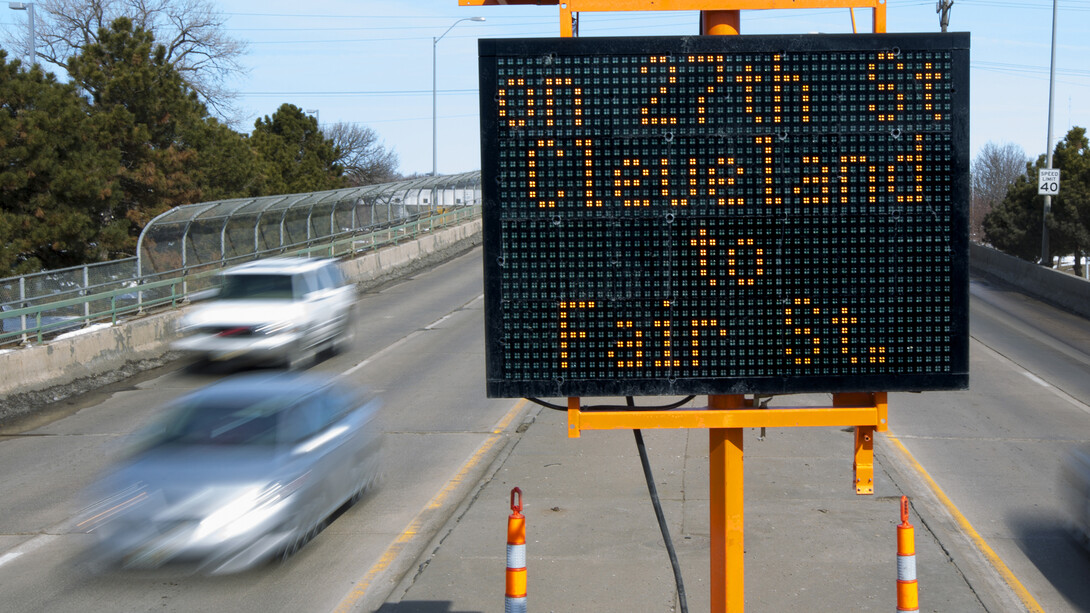
Though admittedly annoying to motorists, this summer’s road construction closures and detours reflect a part of Nebraska’s economy that’s expected to grow during the next three years.
Construction employment in Nebraska will reach a record level this year and continue to grow in 2017 and 2018, according to the latest long-term economic forecast from the Bureau of Business Research at the University of Nebraska-Lincoln.
Thanks in part to an infusion of state tax dollars for roads projects, construction is expected to be the fastest-growing sector of the state’s economy through 2018. By 2018, more than 55,000 people will be working in construction in Nebraska – an increase of 9.5 percent from its pre-Great Recession peak of 50,500 in 2007.
The “Business in Nebraska” forecast predicts moderate growth through 2018 for Nebraska’s economy as a whole. The state’s modest population growth rate will prevent it from adding jobs as fast as other parts of the nation.
Agriculture and machinery manufacturing are expected to be weak spots in the state economy. After reaching a record $7.5 billion in 2011 and a near record in 2013, farm income dropped 39 percent to a projected $4.5 billion in 2015 due to lower crop prices. With livestock prices also falling, farm income is projected to drop another 8.4 percent to $4.2 billion in 2016.
Lower crop and livestock prices have, in turn, placed pressure on the state’s machinery manufacturing industry.
“Lower crop and livestock prices have reduced farm profitability and the level of investment in farm machinery,” said economist Eric Thompson, director of the Bureau of Business Research. “Investment is unlikely to recover over the next few years given that farm profitability is expected to stabilize but not grow.”
However, farm income is expected to bounce back in 2017.
“In a more stable price environment, agricultural producers will be able to grow profits by increasing efficiency,” Thompson said, predicting that increased productive and careful cost management will increase farm income by more than 14.5 percent from 2016 to 2017.
Job growth in other economic sectors should push Nebraska paychecks higher. Nonfarm personal income is predicted to grow by 4 percent or more annually through 2018.
The long-term forecast, which is updated twice yearly, predicts economic growth three years into the future. Thompson develops the projections in consultation with the Nebraska Business Forecast Council, a group of economists who work for UNL, the University of Nebraska at Omaha, utilities and several state government agencies.
The forecast predicts that more jobs also are on the horizon for health care workers, truck drivers and hotel staff. In fact, Thompson says one thing that may hamper Nebraska’s economic growth is a shortage of qualified workers to fill all of those jobs.
The state invested an additional $450 million in new fuel tax revenue and state general fund reserves this year for expressway construction, bridge repair and transportation-related economic development projects. However, Thompson said road construction is not the only factor boosting Nebraska’s construction sector.
“Residential construction will continue to improve in 2016, given steady employment growth, rising incomes, faster household formation and low interest rates,” he said. “Commercial development such as new office space will proceed given strong growth in service employment. At the same time, strong growth in demand for hospitality businesses will drive hotel and restaurant construction projects.”
Health care, the largest component of Nebraska’s services industry, is expected to grow by up to 2 percent a year as Nebraska’s population grows older.
Higher incomes and lower gas prices are expected to boost leisure spending and growth in travel, a boon to the hospitality industry. Trucking – finally rebounding after the Great Recession – will improve because of lower diesel fuel costs and Nebraska’s proximity to Interstate 80. The rail industry, however, will face challenges because of a decline in coal hauling.
To read the full Business in Nebraska report, visit the Bureau of Business Research website here.







